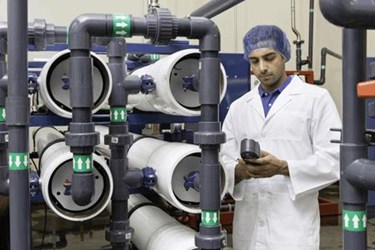Overcoming Market And Technology Barriers To Use Mobile Apps In Hazardous Manufacturing

By Christine Kern, contributing writer

Study finds mobile apps can improve workflows in hazardous conditions.
A 2015 VDC Research survey found manufacturing organizations were facing challenges of outdated infrastructure, workforce transition, and an aging workforce, as well as issues surrounding overall worker productivity and safety. These issues are particularly significant for workers operating in hazardous environments, where paper-based or manual processes have traditionally supported workflows. The high cost of mobile solutions designed to operate in these environs, as well as their functional limitations and gaps in product portfolios and organizational issues all served as serious barriers to adoption of mobile apps in the past.
New research now demonstrates these barriers may be falling away, allowing for more widespread use of mobile technology to improve workflows in hazardous work environments. VDC Research’s study, Mobile Applications In Hazardous Manufacturing Environments: Overcoming Market and Technology Barriers to Mobilize Workflows in Environments With Explosive Atmospheres, has found the number of mobile connections within global factories is expected to double by 2017 and one segment where manufacturing organizations are increasingly focusing their attention is on the automation of workflows in hazardous or explosive environments, where mobile apps can help improve worker safety and productivity.
The overall market for hazardous rated certified rugged handheld and tablet mobile computers is anticipated to be worth $111 million by 2019, representing approximately 12 percent of total rugged mobile shipments to the manufacturing sector. This presents a ripe opportunity for vendors to tap this niche market, particularly since the current limited portfolio of competitive offerings represents a major growth barrier.
While one in five manufacturing environments have explosive atmospheres, and among those approximately seven in ten are either currently deploying or anticipating adding specialized mobile computing/communications devices to support workflows and applications in these environments, it represents a market with great potential for expansion.
Mobile solutions help provide access to real-time data on the go, and the report found the most common mobile apps in hazardous environments include asset reliability/availability (76 percent); location track and trace (53 percent); plant safety and integrity (53 percent); and inspections and audits (47 percent). Of those manufacturing organization that made mobility investments, 70 percent were “extremely satisfied” or “satisfied” with them, citing an ROI of 18 months or less.
For the future, organizations are looking for more ergonomic form factor with key enterprise requirements, citing the following criteria for selecting manufacturing apps: quality/reliability (44 percent); price (30 percent); security features (27 percent); operating system (27 percent); battery life (25 percent); and ruggedness/drop protection (16 percent).
As Matthew Hopkins said, “Mobility plays an important role in this not-so-far-away world, enabling employees in disparate locations to input information into the ecosystem of data and act on results in real-time. The journey towards the connected factory has begun, and those timid in their pursuit will serve as exemplars of the quickly moving forces of creative destruction.”
